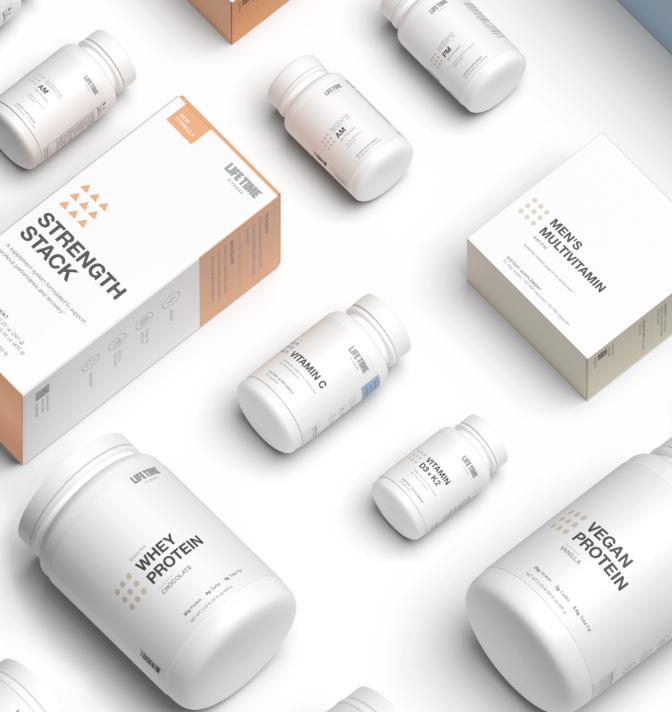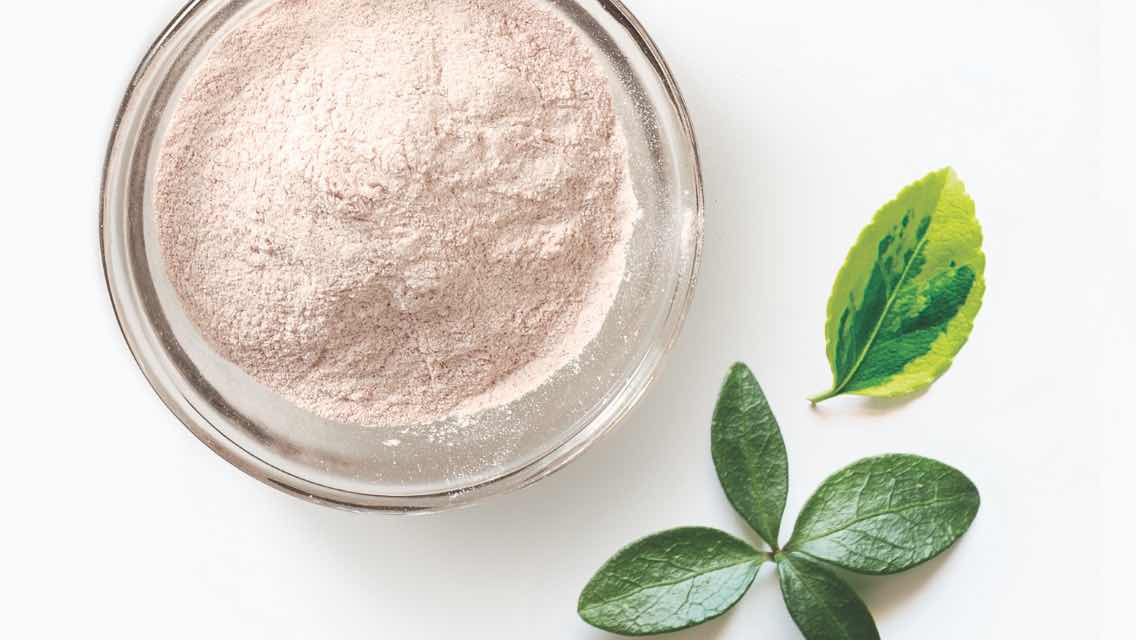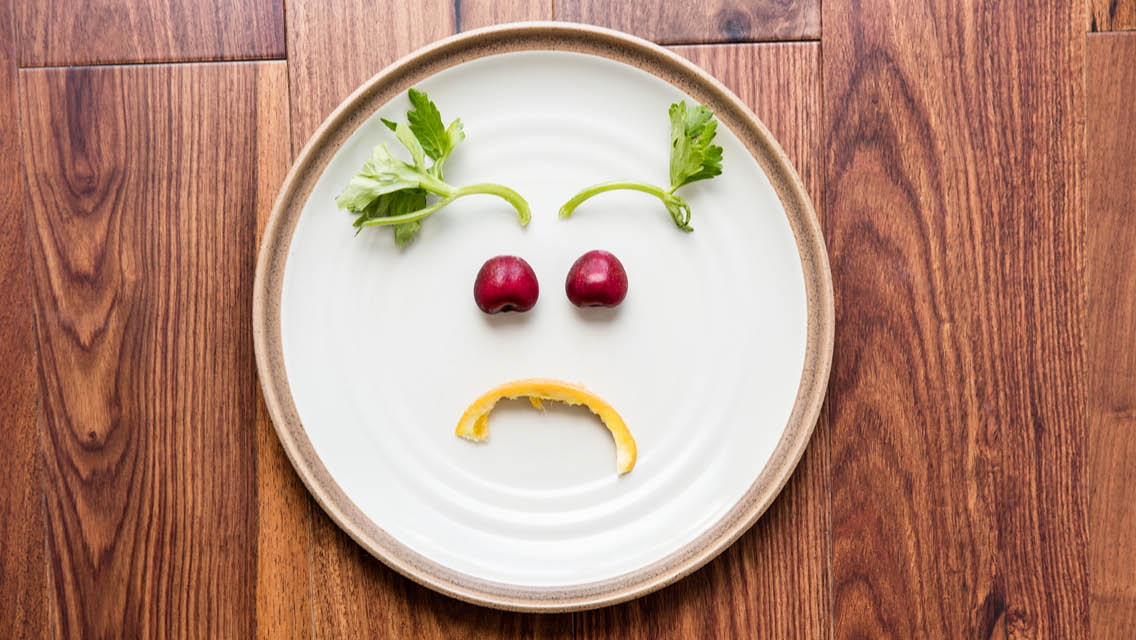If you’ve been around Life Time for a while, you know our dietitians and fitness professionals consistently encourage a higher-protein eating plan to help drive results and metabolic health — and for good reason.
For most people, a higher-protein diet has a number of benefits, including supporting fat loss, satiety and satisfaction from meals, lean muscle growth, blood-sugar control, immunity, and detoxification, to name a few.
Traditional recommendations to boost protein include consuming adequate portions of meat, fish, poultry, plain dairy, and eggs at most meals. In recent years, however, plant-based eating has grown in popularity for a variety of reasons, and for those foregoing animal-sourced protein, there are a few extra considerations to take into account.
If you’re looking to use plant-based proteins to hit the recommended protein target of one gram of protein per pound of ideal body weight, consider these factors:
- Blood-sugar control. A lot of popular vegan sources of protein contain more grams of carbohydrate per serving than protein. Even if the source also serves up a decent amount of fiber, the amount consumed to hit protein targets is still likely to contribute to erratic blood sugar spikes and drops. And regardless of your health goals, your blood sugar matters — a lot.
- Excess calories. If nut- and seed-based foods are a primary source for protein, know that they’re also very calorically dense. While we don’t encourage perpetual or maniacal calorie tracking (since they tend to take care of themselves with a higher-protein approach), calories do still matter. It’s harder to control them naturally when a large group of foods (i.e., “anything from an animal”) is eliminated from the equation. For example, 30 grams of protein from salmon would be approximately 160 to 200 calories, and that same amount of protein from peanut butter would be close to 700 calories.
- Nutrient concerns. Some nutrients are more challenging to get enough of without animal-based foods, such as vitamin B12, zinc, iron, creatine, beta-alanine, preformed vitamin A, glycine, leucine, choline, and long-chain omega-3 fatty acids. I’ve found that most people are surprised to hear that meat provides several important health benefits. That’s not to say you can’t be healthy without it, but it does take some extra effort and planning if your eating is 100 percent plant-based.
- Digestion. By luck of the draw, a lot of plant-based protein go-to’s don’t always agree with digestion. Soy, for example, is a common food sensitivity. Beans, lentils, and certain nuts such as peanuts, cashews, hazelnuts, and pistachios contain FODMAPS, a type of carbohydrate that may be harder to break down for those with IBS. A lot of heartier grains that contain protein — such as farro and bulgur — contain gluten that might be tough on those who experience tricky digestion.
- Increased protein needs. Due to some of the amino acid components of plant-based protein portions, those following a vegetarian and vegan approach tend to fare better when they aim for a total protein intake even higher than that of their omnivore counterparts.
There of course are exceptions to each of the concerns above, and just adding meat to any diet doesn’t automatically make it better. There’s a lot to be said beyond the scope of this article that impacts whether or not a particular eating approach is right for you — including metabolic individuality, health history, nutrition quality, lifestyle, meal balance, and more. While it’s important to be aware of each of the above concerns, there are work-arounds if your eating style is plant-based.
Our Top Picks for Plant-Based Proteins
Organic Edamame, Tempeh, Miso, and Natto
Minimally processed, whole, real soy foods provide all nine essential amino acids with relatively minimal extra calories from carbohydrates and fat. Plus, they deliver a decent amount of zinc, iron, and leucine — all of which can be concerns in a plant-based approach.
The whole, young soybeans in the pod are an unprocessed food, and the fermentation process in making tempeh, miso, and natto can bolster nutrient and probiotic intake and make the soy easier to digest. Tofu is a popular pick, but less desirable health-wise than these fermented options.
Caveat:
Note that there may be concerns with excessive intake, since soy has phytoestrogen properties that may interplay with hormones, along with also being a goitrogen which could interfere with thyroid function.
For optimal health, it’s best to avoid or limit processed soy products, such as soy protein isolate, textured soy protein, hydrolyzed soy protein, and soy-based substitutes for foods like burgers and cheese.
Nuts and Seeds
When used as a dedicated mealtime fat source (since that’s where the calories in nuts and seeds primarily come from), nuts and seeds can provide a decent boost of protein to your overall meal. Depending on what type you choose, you can sneak in a few extra micronutrients as well.
For example, almonds contain zinc, as do hemp seeds and pumpkin seeds. Pumpkin seeds and cashews are known for their iron content. If you work some walnuts and chia seeds into your routine, you’ll get a boost of omega-3 fatty acids.
Caveat:
The nutrients above may be a little challenging for your body to use from these sources. Plants contain phytates that can make it harder to absorb zinc, for example. Some of this can be mitigated by soaking nuts and seeds in water overnight and rinsing, or by using sprouted versions to help minimize phytate levels.
Nuts and seeds also contain the non-heme form of iron, which is poorly absorbed in comparison to animal-sourced heme iron. Outside of a few minimal exceptions (such as algae), the omega-3 fatty acids from plants are in the short-chain ALA form that is not as well utilized as long-chain EPA and DHA forms found in foods like fatty fish.
Beans and Lentils
While they’re predominantly carbohydrate-based, beans and lentils can provide a whole host of benefits — along with protein.
Lentils can give any meal a pop of zinc, iron, and leucine, which is needed for lean muscle growth. White beans and chickpeas provide some iron, and pinto beans are a moderate source of choline, a crucial B-vitamin-like compound for liver health, brain development, and nervous system function.
Caveat:
High intakes of beans and lentils can drive up your starch intake, so be sure to closely track important markers of blood-sugar control, such as glucose, hemoglobin A1C, and insulin. The fiber content and FODMAP carbohydrates in them can also be the culprit behind bloating, gas, diarrhea, and other digestive issues.
Quinoa
Although most people think of quinoa as a cereal grain similar to rice or barley, it’s actually a “pseudocereal” and is more seed-like.
It’s typically consumed as a grain, and whether you’re a plant-based eater or not, it’s a great carbohydrate choice that happens to add a pop of protein alongside the starch. It’s well-known in vegetarian and vegan circles since it’s a complete protein with all nine essential amino acids, along with containing beneficial amounts of iron.
Caveat:
It’s best to think of quinoa as a healthier carbohydrate source rather than a protein source. For context, you would need to consume 850 calories of quinoa (and 175 grams of carbohydrate, which is more than many people need in an entire day) to get 30 grams of protein from quinoa.
Vegan Protein+ All-in-One Shake Mix
From my experience, clients who are committed to plant-based eating see better results, improved labs, and optimized body composition when they are willing to consume at least one or two high-quality protein shakes each day. It’s a great and convenient way to bolster protein without a ton of extra calories from starch or fat.
This particular option is made from pea protein, which is considered a complete protein, but it’s mindfully paired with chia and chlorella proteins to boost up the amount of the amino acid methionine in each 30-gram protein serving. This makes it comparable to the beneficial amino acid profile of whey protein, while remaining a vegan product.
As a bonus, it’s gluten-free, non-GMO, and contains over 50 percent of the daily value of 17 different vitamins and minerals, several of which are typically a concern with plant-based eating.
Find this option here: Vegan Protein+ All-In-One Shake Mix.
Caveat:
It’s important to follow a real-foods-first approach to maximize your nutrition. While one or two shakes per day is recommended to increase your protein intake if your diet is plant-based, be sure to work with a nutrition coach one-on-one if you find that you are so reliant on protein supplements that you’re not consuming enough whole foods.
Plant-Based Proteins Cheat Sheet
| Source | Why we recommend it | Considerations |
| Organic edamame, tempeh, miso, and natto |
|
|
| Nuts and seeds |
|
|
| Beans and lentils |
|
|
| Quinoa |
|
|
| Vegan Protein+ All-In-One Shake Mix |
|
|
Tips for Getting More Out of Plant-Based Proteins
When focusing exclusively on plant-based protein sources, there are a few tips and tricks to implement to help optimize your approach:
- Soak nuts and seeds in water overnight to help increase their nutrient absorbability.
- Pair zinc-containing plant-based protein sources (such as lentils, chickpeas, and pumpkin seeds) with garlic and onion to help increase the absorption of zinc.
- To help enhance iron absorption, pair plant-based sources — such as tempeh, chickpeas, and lentils — with a source of vitamin C, such as strawberries, broccoli, or bell peppers, and cook them in a cast iron. Keep your intake of these foods separate from any coffee or tea consumption, as there are compounds in those beverages that inhibit the uptake of iron.
- Supplement as needed. If a particular meal doesn’t have adequate protein, shake up a bit of quality pea protein in a shaker cup with water and drink it right alongside your food to complement the meal. Add in extra protein and nutrient supplementation from the Vegan+ All-in-One Shake Mix between meals if possible to further close any gaps.
Plant-Based Proteins to Limit or Avoid
The food industry is brilliant at coming up with a processed food to meet every preference or demand. Some options are great, while others are more nutrition pitfalls to limit. While any one-off choice is unlikely to negatively impact your progress toward your health goals, aim to keep these out of your regular rotation and be careful that they do not become nutrition staples to hit your protein needs:
- Seitan. This is a concentrated source of gluten that is often used as a meat substitute for chicken-based dishes, and is often the base of store-bought meat substitutes, such as plant-based meatballs, hot dogs, or deli meat. While gluten is not a problem for everyone, many people do feel best when they avoid it. Read more here: “The Health Risks of Gluten and Symptoms of Gluten Sensitivity“
- Processed soy. This includes soy protein isolate (which has some potential concerns with aluminum and hexane exposure), textured soy protein, hydrolyzed soy protein, hydrolyzed vegetable protein (HVP), and textured vegetable protein (TVP). Soy protein isolate is a common protein source in powders and bars, and some of the other options are often used to give plant-based dishes a heartier texture.
- Meat analogs. Most are made with synthetic ingredients and are far from the real-foods-approach that most people are striving to implement. For those who are plant-based solely for environmental reasons, the sheer number of ingredients and amount and type of processing still can have a notable carbon footprint.





